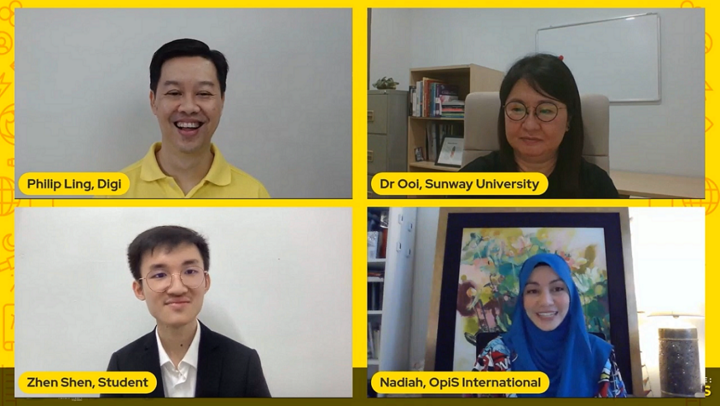The Life Under COVID-19 for Children Online: Values & Challenges (2021) survey found that 71% of children under the age of 21 had more screen time during the pandemic.
Zhen Shen, a form 4 student from the East Coast agreed that students are spending more time on their devices and getting more internet exposure during the pandemic.
He is the youth representative in a panel to discuss the study and the struggles youths are going through during the pandemic, especially in the aspect of online safety.
The survey that ran from August to September 2021. It found that most young people use the internet to learn, browse social media, and stream videos.
According to the study 46% of respondents actively learning new skills online.
However, Zhen says that many children go online without guidance and is expected to behave maturely on their own.
Having peer support online can create a better online community for users. The use of social media as a spearhead to create this environment is integral, said Zhen.
He also added that children should learn to manage their digital footprint to foster a better experience when going online.

Higher Awareness Of Mental Health and Cyberbullying
Dr. Ooi Pei Boon, Director of Special Projects at Sunway University, who is also part of the panel, pointed out that 4 out of 10 respondents in the study feel some degree of loneliness and distress.
The pandemic has cut us all off from physically interacting with friends or family and respondents have reportedly increased their internet dependency, which exposes them to risks of cyberbullying, Dr. Ooi stated.
At the same time the survey found that the incidents of cyberbullying has dropped. Only 5% of the respondent said that they were bullied online during the pandemic compared to 8% before the pandemic.
This is credited to the increased awareness about cyber bullying among youths.
61% of the 1,746 respondents agreed that cyberbullying is still a big issue.
The study also show that 42% of the respondents had received some sort of protection and guidance from parents, guardians or school-run initiatives against cyberbullying.

What Can Parents Or Teahcers Do?
Dr. Ooi suggests that parents should be tech savvy and have some level of digital literacy.
She believes that through Cyberpareting, parents can keep their children safe while online. At the same time they need to be careful of their own content consumption because this could expose the children to less than pleasant content.
Dr. Ooi asserted that parents need to be less intrusive and acknowledge the children’s feelings while addressing the problem like dependency or cyberbullying in a manner that makes the child open up and engage in proper conversation with the parents.
Nadiah Hanim Abdul Latif, a child advocate and co-founder of OpiS International said that parents also need to understand and empathise with what the children are going through with the online classes and increased exposure to the bad side of the internet.
She suggested that parents should abstain from using screen time as a reward for children that behaves a certain way.
Instead, parents should allocate their children’s screen time and be fair about it.
She added that adults need to start being more aware that the children are mirroring their bahaviour both online and offline.
There is also a need to include youths in the policy making process to foster a better online environment.
According to Nadiah, teachers should also pay attention to their students’ behavior and environment during class for signs of abuse and help them escape those situations.
She then said, teachers could also give positive reinforcements to students instead of demerits to encourage better behaviour.
Peer Support, It Is Equally Important
The panel agreed that youths are maturing faster than the older generation, their engagement online is more positive due to the amount of exposure they have.
The consensus from the survey says that youths are more aware of what is happening online and are using features on social media platforms to keep themselves and their friends safe.
The study is a part of Digi’s Corporate Social Responsibility (CSR) initiative called the Yellow Heart Initiative.
This is the third time Digi has done a Yellow Heart survey and this particular iteration is done to get an idea on the experiences of the youth in the areas of online safety, mental wellbeing and online skill cultivation. Click here for more information on Digi’s Yellow Heart initiatives.










